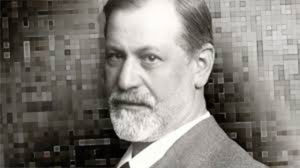Le rêve et l’esprit
Résumé
La distinction entre contenu latent et contenu manifeste est la condition "sine qua non" de l'interprétation psychanalytique des rêves.
Négliger cette distinction revient à transformer la cure analytique en entreprise psychopédagogique, soit à lui ôter sa spécificité.
La structure syntaxique du rêve est homologue de celle du mot d'esprit, l'un et l'autre étant des productions de l'inconscient soumises aux lois du processus primaire.
Il résulte de cette homologie que le texte latent résonne souvent comme un mot d'esprit particulièrement sophistiqué.
Faute d'exploiter la veine "spirituelle" du rêve, soit par méconnaissance soit par méfiance à l'endroit des jeux de mots réputés futiles, on prend le risque d'oeuvrer dans le sens de la rationalisation et de la consolidation du refoulement.
Et on finit par oublier que ce qui surgit réellement de l'inconscient a toujours les qualités de la surprise.
Samenvatting
Het is een "conditio sine qua non" voor de psycho-analytische droominterpretatie een onderscheid te maken tussen de manifeste en latente droominhoud.
Dit onderscheid in de wind slaan, komt er op neer de psycho-analytische behandeling om te vormen tot en psycho-agogische onderneming, of haar specificiteit te ontnemen.
De syntactische structuur van de droom lijkt op die van de grap ; beiden ontspruiten uit het onbewuste en zijn als dusdanig onderworpen aan het primair proces.
Voortgaande op deze gelijkenis, kunnen we besluiten dat de latente tekst dikwijls overkomt als een bizonder spitsvongige grap.
We moeten dan ook deze ader van "geestigheid", dit de droom bevat, durven uitbaten. Laten we hem daarom noch miskennen, noch wantrouwing zijn t.s.v. de woordspelingen die de slechte faam bezitten onbeduidend te zijn. Doen we dit niet, dan gaan we te veel te toer van de rationalisatie op en verstevigen we te veel de verdringing.
Summary
The distinction between latent and manifest content is the condition "sine qua non" for the psychoanalytic interpretation of dreams.
The neglect of this distinction has the effect of transforming psychoanalysis into a "psychagogic" enterprise, that is to remove its specificity.
The syntactic structure of the dream is similar to that of wit ; both being productions of the unconscious, following the laws of primary process. Because of this homology, the latent text often has the sound of a particularly sophisticated witticism.
Failure to exploit the "spiritual" vein of the dream either through non-recognition or through mistrust regarding wit considered as futile, runs the risk of working in the direction of rationalisation and of the strenghtening of repression.
Finally, one forgets that what springs genuinely from the unconscious has always the quality of surprise.





